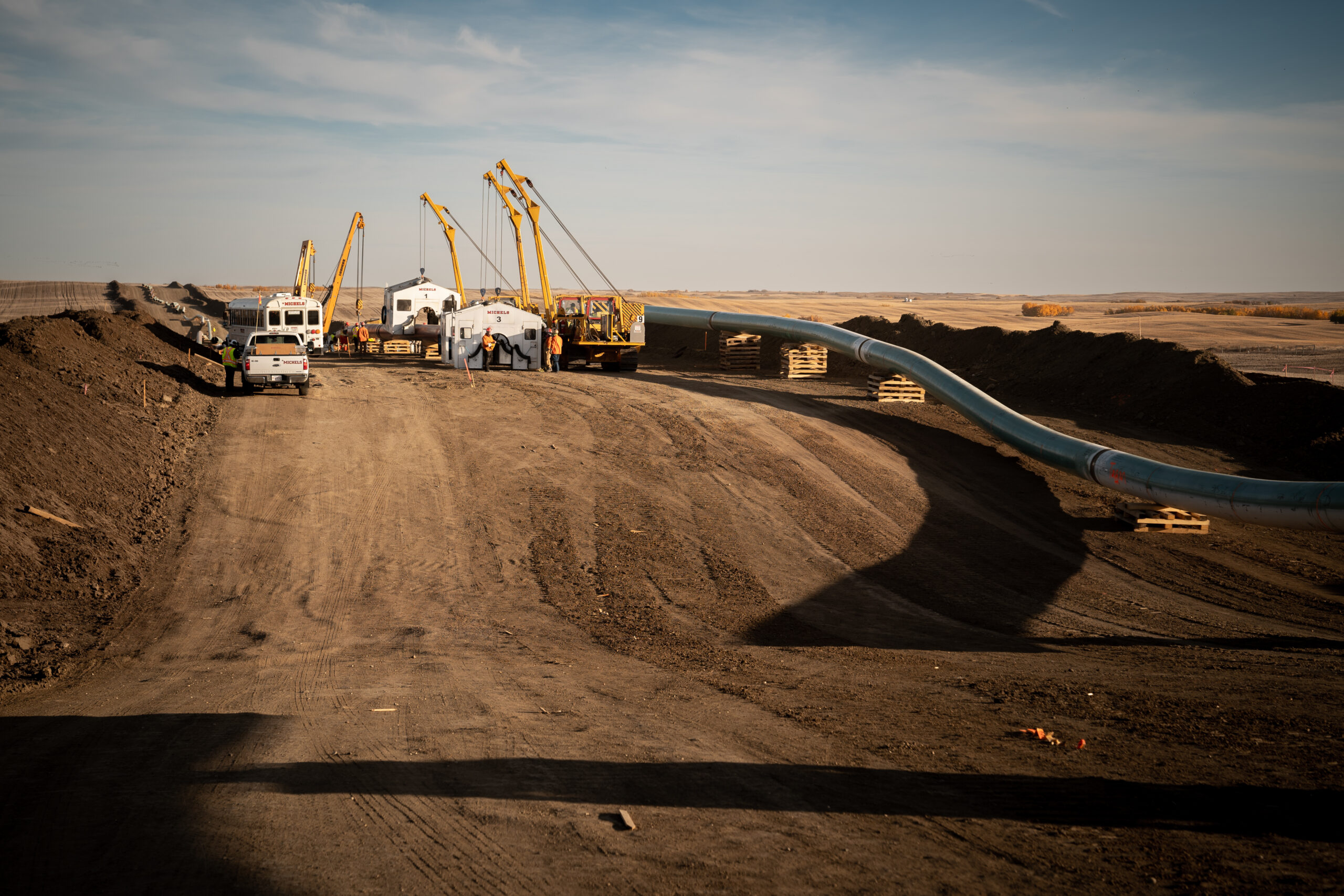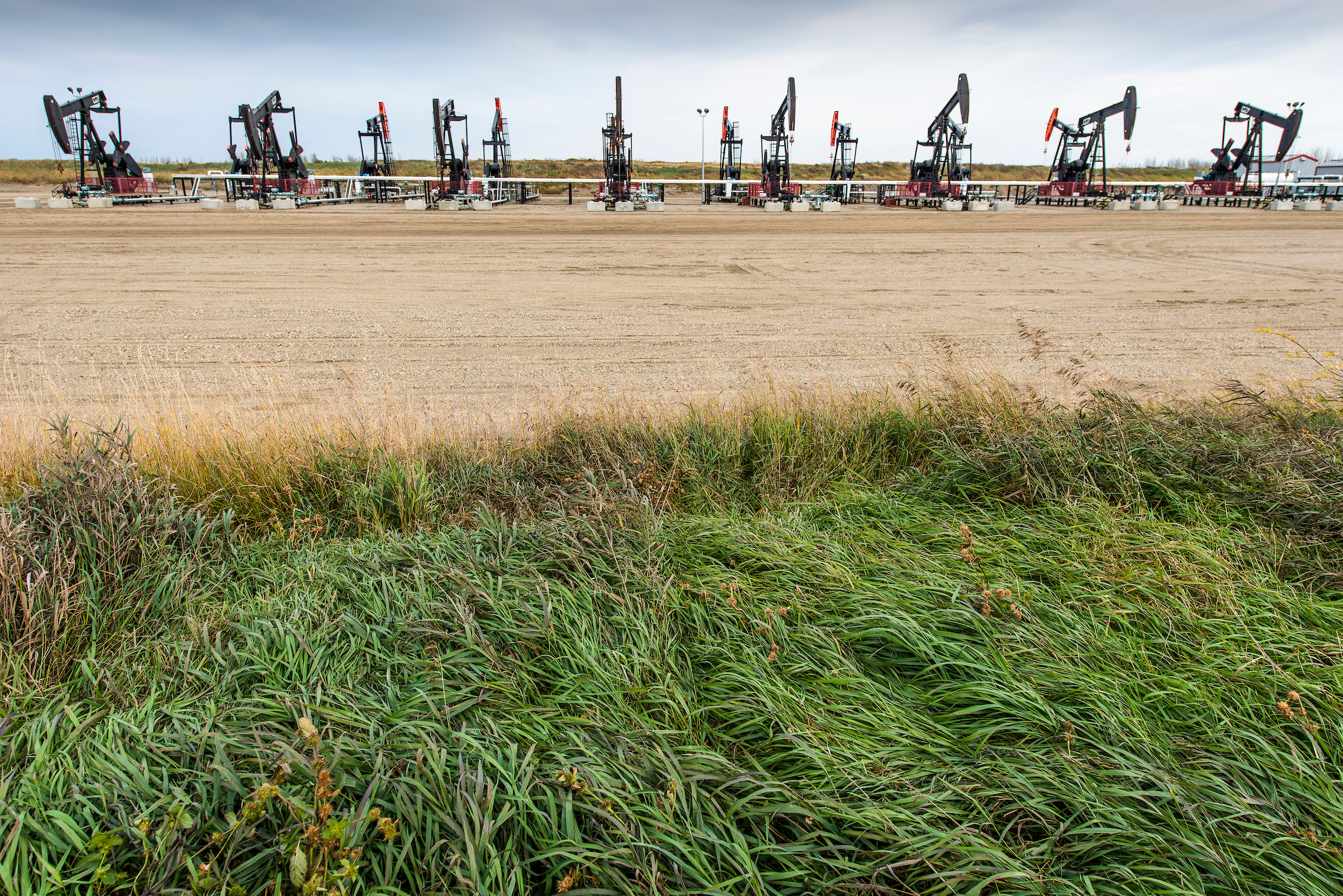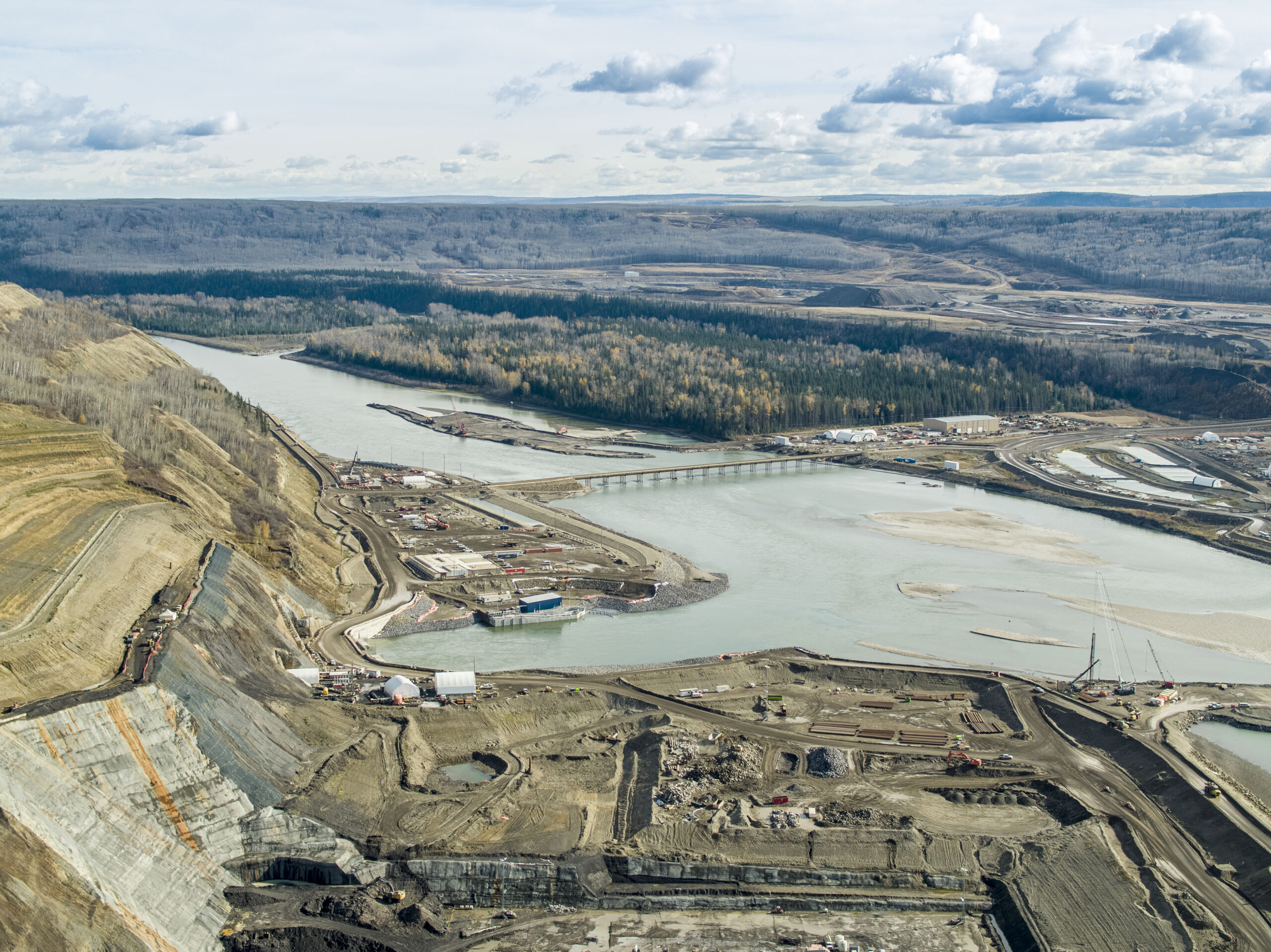
A deadly disease is killing millions of bats. Now Trump funding cuts threaten a promising Canadian treatment
At a crucial point in their research, biologists are scrambling to find new support for...
In his first weeks in office, President Joe Biden sent a clear message to the world: the United States is getting serious about climate action.
On inauguration day, Biden rejoined the Paris Agreement on climate change, issued a temporary moratorium on oil and natural gas leasing in the Arctic National Wildlife Refuge, directed government agencies to consider revising fuel economy standards and methane emissions regulations and cancelled the permit for the Keystone XL pipeline by executive order.
“The United States and the world face a climate crisis,” he said. “That crisis must be met with action on a scale and at a speed commensurate with the need to avoid setting the world on a dangerous, potentially catastrophic, climate trajectory.”
Days later, Biden issued further orders, committing the U.S. to emissions-free electricity generation by 2035 and a net-zero economy by 2050. He also established a national climate task force with leaders from all 21 federal agencies and departments “to enable a whole-of-government approach to combating the climate crisis.”
The plans put forward by Biden and Vice-President Kamala Harris are a marked shift from Donald Trump’s crusade to roll back dozens of environmental policies and regulations.
The new U.S. administration also offers a prime opportunity for Canada’s clean economy after a challenging four years, which saw Ottawa frequently at odds with its largest trading partner over key climate measures.
But it also means Canada “can’t afford to be lackadaisical about climate action because our key trading partner, one of the globe’s largest economies, is serious about it,” said Ravipal Bains, a corporate lawyer with McMillan LLP who has experience in environmental and social governance issues.
“It may become a competitiveness issue if we are not matching or keeping speed with the U.S. in terms of sustainability,” he said.
Merran Smith, executive director of Clean Energy Canada, a think tank at Simon Fraser University, said U.S. climate action is “hugely significant for Canada.”
Biden has clearly signaled the U.S. is transitioning away from greenhouse gas-intensive products toward clean energy and clean technology, she said, and Canada has an opportunity to help fulfill demand.
“This is our race to lose, we are well positioned, but we need to take action,” Smith said.
While Biden and Harris have taken significant steps already and promised more to come, their administration is facing a considerable challenge in closing the gap in climate policies left by the previous government.
“They lost four years during the Trump presidency,” said Eddy Pérez, the international climate diplomacy manager at Climate Action Network.
Canada, meanwhile, was able to push climate action forward, including by implementing a carbon tax, despite the challenges posed by the former U.S. administration, he said.
In December, the Liberal government proposed increasing the federal backstop carbon price by $15 each year starting in 2023, which would see the price rise to $170 per tonne by 2030.
In some areas, though, the Biden-Harris government is already leading the way.
Biden committed to addressing environmental injustice in the U.S. and has directed all federal agencies to develop policies and programs to tackle the “disproportionate health, environmental, economic and climate impacts on disadvantaged communities.”
He has also established a White House environmental justice inter-agency council and environmental justice advisory council.
“You don’t see that explicitly in Canada,” said Deborah McGregor, Canada Research Chair in Indigenous environmental justice at York University. “Canada doesn’t have an environmental justice framework.”
Biden’s directive builds on a 1994 executive order that required the U.S. Environmental Protection Agency and other agencies to develop environmental justice policies.
McGregor said Biden’s recent order strengthens environmental justice policy by expanding it across the entire government.
“It’s going to enable people on the ground to be able to hold them accountable,” she said.
One thing Biden’s order doesn’t specifically address is the impact of colonialism.
“That’s a big part of how Indigenous people experience injustice,” said McGregor, who is Anishinaabe from Whitefish River First Nation. “If you don’t actually address the underlying causes, there’s always going to be the undercurrent of the conditions that create injustice.”
Meanwhile in Canada, the federal government has not explicitly addressed environmental justice or environmental racism in its climate plan.
But private member’s bill Bill C-230, which would mandate the development of a national strategy to redress the harms caused by environmental racism, is garnering attention particularly among scholars and environmental advocates, she said, crediting Ingrid Waldron with leading the push for the legislation.
Waldron, a sociologist at Dalhousie University, directs the
Environmental Noxiousness, Racial Inequities and Community Health (ENRICH) Project, an initiative to address the effects of environmental racism in Mi’kmaq and African Nova Scotian communities.
Put forward by Lenore Zann, a Liberal MP from Nova Scotia, the bill acknowledges that “a disproportionate number of people who live in environmentally hazardous areas are members of an Indigenous or racialized community” and calls for the development of a strategy to address environmental racism.
In December, Justice Minister David Lametti also introduced Bill C-15, an act respecting the United Nations Declaration on the Rights of Indigenous Peoples. While some experts see it as an important step forward, others say it fails to live up to the intent of the UN declaration, APTN reported late last year.
Both bills are in the early stages of the legislative process.
McGregor said U.S. acknowledgement of environmental injustice explicitly in its climate policies could influence further action in Canada.
New ambition in Washington could make it easier for the Trudeau government to ramp up efforts to slash greenhouse gas emissions and make investments in Canada’s clean economy.
“We hear this over and over and over in Canada that our portion of global emissions is so small that we really shouldn’t take an economic hit of any kind in reducing those emissions … unless the U.S. makes significant strides,” said Sarah Burch, Canada Research Chair in sustainability governance and innovation at the University of Waterloo.
With the U.S. now promising major investments in climate action, that argument goes up in smoke.
A key question is what will it mean for the oil industry, which Burch called Canada’s “Achilles heel.”
Biden’s decision to cancel the permit for Keystone XL was met with disappointment in Canada from both Prime Minister Justin Trudeau and Alberta Premier Jason Kenney.
Kenney called for economic retaliation or compensation for TC Energy as well as his own government — which invested $1.5 billion in the pipeline just last year — if Biden would not reconsider the project. Kenney subsequently said his government planned to sue for compensation under provisions of the North American free-trade agreement that remain in place, The Globe and Mail reported.
Richard Masson, an executive fellow at the University of Calgary’s school of public policy and chair of World Petroleum Council Canada, said if both Enbridge’s Line 3 pipeline and the Trans Mountain pipeline expansion are built — offering almost a million barrels in new pipeline capacity between them — they could accommodate oilsands production forecast through 2025 or 2026.
“It was about that point where Keystone would start to be needed,” he said. Without it, his guess is that oil will be shipped through the Trans Mountain pipeline, loaded onto tankers and shipped through the Panama Canal to refineries on the U.S. Gulf Coast.
The Keystone decision was just one of a number of measures Biden took during his first weeks in office that signal the U.S. is shifting away from fossil fuels. Biden also paused new oil and natural gas leases on public lands, ordered a review of all existing leases and permitting practices for fossil fuel development on federal land and directed federal agencies to eliminate fossil fuel subsidies.

In his first few days in office, Biden made some big moves to signal his commitment to climate action, including cancelling the permit for the Keystone XL pipeline. The decision, while expected, drew criticism from the Alberta and federal governments. Photo: Government of Alberta / Flickr
At the same time, he ordered all federal agencies to procure zero-emission vehicles, a step that could boost the electric vehicle market in the U.S., where transportation accounts for 28 per cent of greenhouse gas emissions and 68 per cent of petroleum consumption.
“From a Canadian perspective, this is a wake-up call,” Pérez, of Climate Action Network, told The Narwhal. While Canada has taken important steps such as introducing climate accountability legislation and a carbon price, “we have not willingly addressed our biggest and most difficult challenge, which is our dependence on the fossil fuel economy,” he said.
“The Biden administration is doing that.”
While the emissions intensity (the amount of emissions released per unit of production) in the oilsands declined between 2000 and 2018, according to Natural Resources Canada data, overall emissions from the oil and gas sector increased 23 per cent largely due to increased production.
And Masson said he expects to see Canada’s oil production continue to increase over the next 10 to 15 years.
“Globally, our demand for oil is not likely to really fall off a cliff anytime soon,” he said.

Canadian experts are closely watching to see what Biden’s climate policy will mean for Canada’s oil industry, which relies heavily on U.S. demand. Photo: Garth Lenz / The Narwhal Photo: Garth Lenz / The Narwhal
An April 2020 report prepared by a Montreal consulting firm for the federal government raised concerns that the supply of plug-in electric vehicles isn’t keeping up with demand.
Electric sales have increased substantially in Canada in recent years: zero-emission vehicles accounted for 3.5 per cent of new vehicles registered in the first half of 2020, up from 2.2 per cent of all sales in 2018. Globally, electric vehicles had captured 2.8 per cent of the global market by the first quarter of 2020, according to an analysis by McKinsey.
But Masson said he doesn’t expect a sea change on the vehicle front.
“What Biden is working on, that is important, and it’s going to have implications, but it’s not going to change overall consumption in a dramatic way,” he said. “In my view we’re so locked into the system that we have that it’s very difficult to turn that boat.”
Ninety-eight per cent of Canada’s oil exports go to the U.S., which means the future of crude demand south of the border will have a huge impact on the pace of Canada’s transition to a clean economy, Burch said. If that market shrinks, it would incentivize economic diversification and investment in renewable energy, she said.
Between Biden’s plan to transition the U.S. federal fleet of 645,000 vehicles to zero-emission vehicles and recent announcements from companies such as FedEx and Amazon to do the same, there is “potential for EV adoption to happen very rapidly in the United States,” said Sara Hastings-Simon, a research fellow at the University of Calgary’s school of public policy, in an opinion piece for CBC News.
“The impact of electrifying transportation on oil consumption in the United States will be significant,” she wrote.
It also brings major new opportunities for Canada’s clean economy.
Natural Resources Canada reports the country gets about 82 per cent of its electricity from zero-emission sources, predominantly hydroelectric projects in B.C., Manitoba and Quebec. In recent years, however, a broader recognition of the social and environmental impacts of large-scale hydro projects has brought more public scrutiny of hydro and especially the construction of new dams to support electricity exports to the U.S.
But there are many opportunities across the country to expand renewable energy production, said Smith, the executive director of Clean Energy Canada.
“Alberta has enormous solar and wind potential — we have great renewable potential all across Canada — so we could be selling renewable electrons to the United States,” she said.
Canada and the U.S. could work together on a continental approach to clean electricity that could see both countries reach 100 per cent emissions-free electricity by 2035, she suggested.

Hydroelectric projects like B.C.’s Site C dam are a key driver behind Canada’s zero-emission electricity generation. But the social and environmental impacts of hydro projects have been coming under increased scrutiny of late. Photo: Jayce Hawkins / The Narwhal
There are numerous Canadian clean tech companies poised to help meet the demand for lower carbon products, Smith said, pointing to Nova Scotia’s CarbonCure Technologies, which embeds carbon dioxide in concrete, and B.C.’s Ballard Power, which provides hydrogen fuel cells for buses and other vehicles, as just two examples.
Other opportunities lie in the development of the metals, minerals and other natural resources needed to build a clean economy — the ingredients for zero-emission vehicles and energy efficient buildings.
“We are brilliantly positioned to work with the U.S. on what could be a North American electric auto pact,” Smith said, adding that mining, forestry and other natural resource industries are major job creators.
While Biden did include provisions that the clean electricity and zero-emission vehicles procured by federal agencies must be made in the U.S., Bains, the McMillan LLP lawyer, noted these types of Buy American procurement policies aren’t new. He doesn’t expect Biden’s plans to cause major stumbling blocks for Canadian companies, though the Canadian government could lobby for exemptions.
Ultimately, the new U.S. procurement policies could help bolster overall demand for clean technologies in the private sector that could benefit Canadian companies, Bains said.
Other changes in the U.S., including possible new rules requiring companies to adequately disclose their climate risks when trying to raise financing, could affect Canadian companies as well, said Bains, and possibly lead to changes in Canadian regulations.
“Many Canadian companies, particularly natural resource and resource oriented companies look down to the U.S. … to raise capital,” he said.
Observers say Canada needs to move quickly to capitalize on these opportunities.
“This is a race,” Smith said. “In a race, you can fall behind very quickly, even if you’re at a strong starting position.”
In November, the Trudeau government introduced legislation to formalize its commitments to reach net-zero emissions by 2050. In December, it unveiled new measures to achieve that goal.
Now, Smith said, “we need to act on them.”
Smith suggested Trudeau could follow Biden’s lead and ensure all federal vehicles purchased are electric. The Canadian government could also establish a national zero-emission vehicle mandate requiring car dealerships to sell a certain percentage of electric cars, a step beyond existing targets — that 10 per cent of all new vehicles sold by 2025 be zero-emission before reaching 100 per cent by 2040.
“We’ve seen it work in British Columbia and Quebec,” she said.
There are other areas where Canada and the U.S. can push climate action forward together, Pérez said, including vehicle emissions standards, methane and carbon emission regulations, carbon border adjustments, and policies for the Arctic.
While Biden’s climate plan is certainly a major departure from the previous administration, Burch cautions that the measures put forward so far are not entirely “transformative.”
“It’s essentially trying to preserve livelihoods and lifestyles exactly as they are but just drawing upon renewable energy as the source of fuel and power,” she said.
“If we all have single occupancy vehicles that are powered by renewable energy, that’s good. But our cities then stay the same shape, same function as they were before,” Burch said. “You’re still commuting vast distances across suburbs and sprawling urban areas to get to your work.”
In this scenario, there may be few incentives to invest in public transit or infrastructure that allows for more people to bike or walk through their communities, she said.
Burch hopes Canada can “contribute a more holistically sustainable vision of what communities could look like — healthier and more biodiverse, more inclusive and equitable, and also lower carbon.”In what could be a start toward that vision, Trudeau recently announced almost $15 billion in funding for public transit projects, including a portion that will be used to develop a permanent $3 billion per-year fund. Most of the money, though, won’t start flowing until 2026.
Updated on Feb. 18, 2021 at 1:10 p.m. PST: An earlier version of this story incorrectly stated that Canada exports 98 per cent of its oil to the U.S. In fact, 98 per cent of Canada’s oil exports go to the U.S.
Content for Apple News or Article only Get the inside scoop on The Narwhal’s environment and climate reporting by signing up for our free newsletter. This...
Continue reading
At a crucial point in their research, biologists are scrambling to find new support for...

From True Detective to The Grizzlies, the Inuk actor is known for badass roles. She's...

Artist Alison McCreesh’s latest book documents her travels around the Arctic during her 20s. In...
